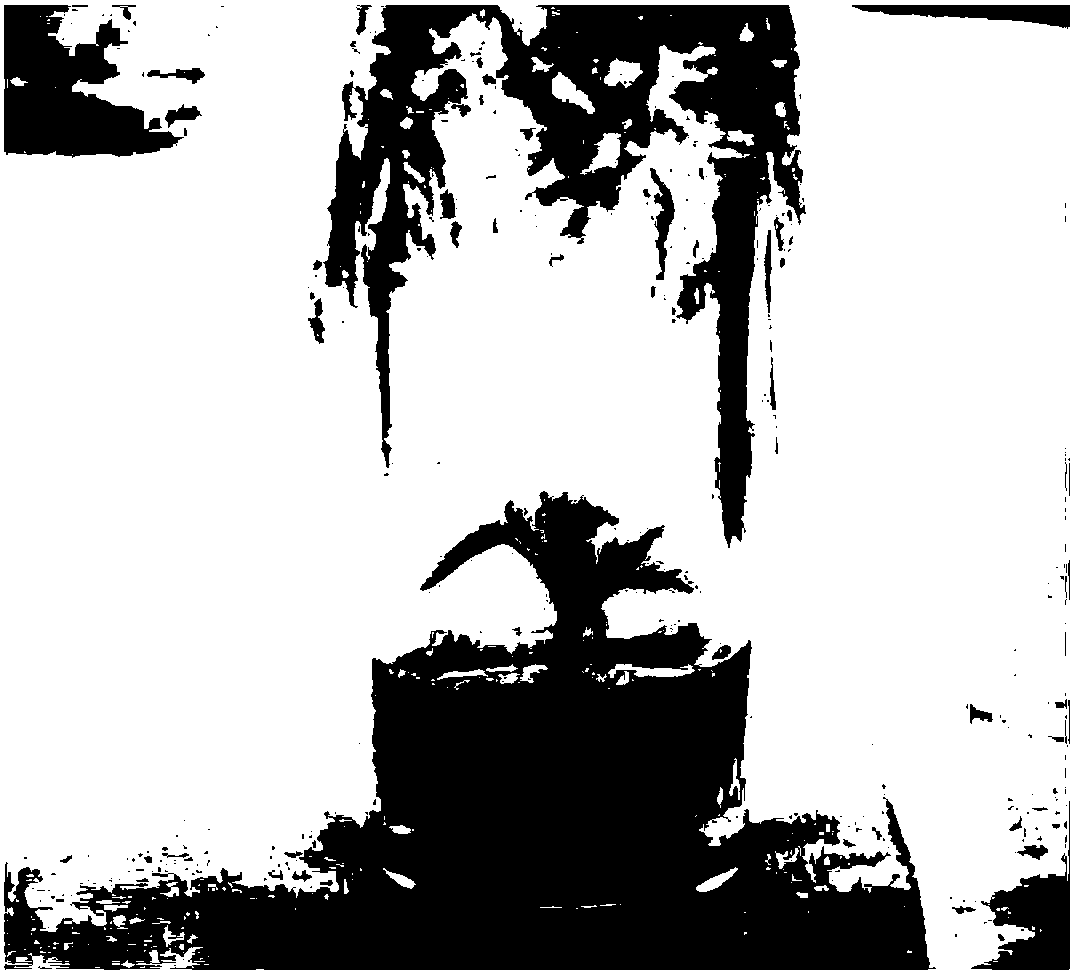Tissue culture method for Japanese maple
A technique of tissue culture and Acer palmatum, applied in horticultural methods, botany equipment and methods, horticulture, etc., can solve problems such as difficult rooting, difficult realization of factory production, and difficult survival of cuttings, and achieves low cost, pollution suppression, The effect of meeting the needs of large-scale industrial seedling cultivation and industrialization development
- Summary
- Abstract
- Description
- Claims
- Application Information
AI Technical Summary
Problems solved by technology
Method used
Image
Examples
Embodiment 1
[0033] A method for tissue culture of Acer palmatum, comprising:
[0034] Pretreatment: Take the current-year-old branches of Acer palmatum, cut them into budded stems with 1-2 buds, remove the leaves, sterilize with 75Vol% alcohol for 20-40s, wash with sterile water 1-3 times, Sterilize with 0.1wt% mercuric chloride for 3 to 8 minutes, wash with sterile water for 5 to 6 times, and obtain sterilized explants;
[0035] Start-up culture: inoculate the sterilized explants on the start-up medium for start-up culture to obtain axillary buds; the start-up medium includes: MS salts and H organic, supplemented with 0.1-0.3mg / L6-BA, 0.05 ~0.1mg / LNAA, 0.1~0.4%PPM;
[0036] Proliferation culture: inoculate the axillary buds in the proliferation medium for proliferation culture to obtain clustered buds; the proliferation medium includes: MS salts and H organic, supplemented with 0.01-0.1mg / L TDZ, 0.4-0.6mg / LCPPU;
[0037] Rooting culture: after removing the callus from the base of the c...
Embodiment 2
[0043] Effects of Components in Induction Medium on Germination of Axillary Buds
[0044] Pretreatment: Take the current-year-old branches of Acer palmatum, cut them into budded stems with 1-2 buds, remove the leaves, sterilize with 75Vol% alcohol for 20-40s, wash with sterile water 1-3 times, Sterilize with 0.1wt% mercuric chloride for 3 to 8 minutes, wash with sterile water for 5 to 6 times, and obtain sterilized explants;
[0045] Start-up culture: inoculate the sterilized explants on the start-up medium for start-up culture to obtain axillary buds with a length of 1-2 cm; the start-up medium includes: MS salts and H organic, supplemented with 6-BA, NAA, PPM, 20-30g / L sucrose, 4-6g / L agar. The pH value of the start-up medium is 5.6-5.8; the culture temperature of the start-up culture process is 24-26°C, the light intensity is 1500-2000Lx, and the light time is 12-14h / d.
[0046] Wherein, the Acer palmatum is selected from the cultivar Acer palmatum New Coral Pavilion, and...
Embodiment 3
[0053] Effects of Growth Hormone Concentration in Proliferation Medium on Proliferation of Axillary Buds
[0054] Pretreatment: Take the current-year-old branches of Acer palmatum, cut them into budded stems with 1-2 buds, remove the leaves, sterilize with 75Vol% alcohol for 20-40s, wash with sterile water 1-3 times, Sterilize with 0.1wt% mercuric chloride for 3 to 8 minutes, wash with sterile water for 5 to 6 times, and obtain sterilized explants;
[0055] Start-up culture: inoculate the sterilized explants in the start-up medium for start-up culture to obtain axillary buds with a length of 1-2 cm; the start-up medium includes: MS salts and H organic, supplemented with 0.2mg / L6 -BA, 0.05mg / LNAA, 0.2%PPM, 20~30g / L sucrose, 4~6g / L agar;
[0056] Proliferation culture: inoculate the axillary buds in the proliferation medium for proliferation culture to obtain clustered buds with a plant height of 2-3 cm; the proliferation medium includes: MS salts and H organic, supplemented wi...
PUM
 Login to View More
Login to View More Abstract
Description
Claims
Application Information
 Login to View More
Login to View More - R&D Engineer
- R&D Manager
- IP Professional
- Industry Leading Data Capabilities
- Powerful AI technology
- Patent DNA Extraction
Browse by: Latest US Patents, China's latest patents, Technical Efficacy Thesaurus, Application Domain, Technology Topic, Popular Technical Reports.
© 2024 PatSnap. All rights reserved.Legal|Privacy policy|Modern Slavery Act Transparency Statement|Sitemap|About US| Contact US: help@patsnap.com










